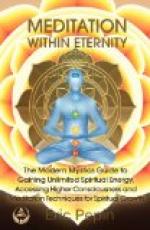CHAPTER II
MAN’S RELATION TO GOD AND TO HIS FELLOW-MEN
The riddle of the Sphinx is no riddle at all. The strange figure, the lower part animal; the upper part human; and the sprouting wings epitomize the growth and development of man from the animal, or physical (carnal), consciousness to the soul consciousness, represented by woman’s head and breast, to the supra-conscious, winged god.
No higher conception of life has ever emanated from any source, than the concept of man developed to a state of perfection represented by wings (a symbol of freedom). These winged humans are sometimes called angels and sometimes gods, although the words may not be synonymous.
The point is, that no theory of life and its purposes seems more general or more unescapable than that of man’s growth from sin (limitations) to god-hood—freedom.
Whether this consummation is brought about through an unbroken chain of upward tendencies from the lowest forms of life to the highest; or whether it is symbolized by the old theologic idea of man’s fall from godhood to sin, the fact remains that we know no other ideal than that represented by perfected man; and we know no lower idea than that of man still in the animal stage of consciousness.
Artists, painters, sculptors, wishing to depict the beauty of spiritual things, must still use the human idea for a model—refined, spiritualized, supra-human, but still man.
It is a truism that man epitomizes the universe. Therefore, the law of growth, which science names evolution, may be studied and applied with equal precision and accuracy to the individual; to a body of individuals called a nation; and to worlds, or planets.
The evolution of an individual is accomplished when he has learned through the various avenues of experience, the fact of his own godhood; and when he has established his union with that indescribable spiritual essence which is called Om; God; Nirvana; Samadhi; Brahm; Kami; Allah; and the Absolute.
A Japanese term is Dai Zikaku. The Zen sect of Japanese Buddhists say Daigo Tettei, and one who has attained to this superior phase of consciousness is called Sho-Nin, meaning literally “above man.”
Emerson, the great American seer, expressed this Nameless One, as The Oversoul, and Herbert Spencer, the intellectual giant of England, used the term Universal Energy.
Emerson was a seer; Spencer was a scientist, which word, until recently, was a synonym for materialist.
But what are words?
Mere symbols of consciousness, and subject to change and evolvement, as man’s consciousness evolves. The student of truth will recognize in these different words, exactly the same meaning. The “eternal energy from which all things proceed” is a phrase identical with “The Oversoul,” or “The Absolute,” from which all manifestation comes.




